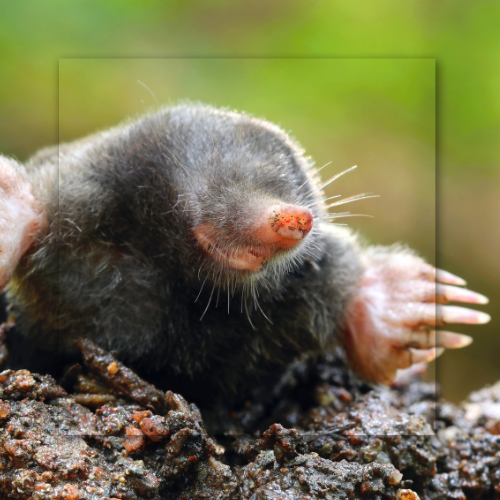
Mole Removal And Control
If you're a resident of the North Atlanta area, you're well aware of the lush greenery and the beautiful gardens that grace our neighborhoods. However, what you may not know is that this captivating environment is also a magnet for a particular kind of nuisance: moles.
Trouble Beneath The Surface
In our part of Georgia, you'll primarily come across the Eastern Mole. Small and somewhat unassuming, these creatures are nevertheless responsible for a range of disruptions. They aren't simply out to spoil your landscaping efforts, although that's undoubtedly the most visible problem. Moles burrow and tunnel beneath the surface, leaving raised mounds of soil and ruining the aesthetics of your lawn. But the impact is more than skin-deep. Their activities can inadvertently sever roots and dislodge plants, impairing the health of your garden. Furthermore, their intricate tunnel systems can compromise the integrity of the soil itself, creating hazards for those walking above.
In the midst of all the inconvenience moles cause, it's easy to overlook the unique characteristics of these animals. For instance, did you know that they can eat 70-100% of their body weight daily? That's an enormous appetite! They do play a role in aerating the soil and controlling insect populations, but when weighed against the negative impact on your property, it's not much consolation. Homeowners across the United States spend millions of dollars each year on control methods and repairs associated with mole activity.
The Perils Of Do-It-Yourself Remedies
You might consider dealing with the issue yourself, and why not? The marketplace is saturated with traps, chemicals, and all sorts of gadgets that promise to rid you of your burrowing problems. But here's the catch: these creatures are not easily ousted. Highly elusive and mainly active during the night, moles can be challenging to capture. Also, their rapid digging skills mean that as soon as you've eliminated one tunnel, you'll probably find another has sprung up elsewhere.
When it comes to effective mole removal and control, Grade A Critter is second to none. Our team of experienced professionals is equipped with specialized tools and the necessary expertise to manage the situation efficiently. Utilizing humane removal methods and adhering to local and state regulations, we aim to resolve your issue swiftly, allowing you to return to enjoying your outdoor spaces. Beyond removal, we also provide recommendations and assistance in implementing preventative measures to keep your lawn free of such disturbances in the future. Contact us today for an estimate.
Frequently Asked Mole Questions
Q1. How Do I Know If the Tunnels in My Yard Are Active?
A1. One common question we often hear is how to determine if the tunnels that have appeared in your yard are still active. To answer this, you can perform a simple test. Flatten a section of the tunnel and mark it with a small flag or other visible indicator. Wait for 24 to 48 hours and check to see if the area has been raised again. If so, the tunnel is still active, and the nuisance is still in the vicinity. This is a clear sign that it's time to contact Grade A Critter for a professional assessment and removal service.
Q2. Are There Any Natural Predators That Can Control Mole Populations?
A2. Another interesting question revolves around natural predators. While it's true that some animals like hawks and foxes do prey on moles, relying on nature's food chain to solve your problem is often ineffective. These predators are unlikely to significantly reduce the number of these burrowers on your property, mainly because moles are subterranean and not easily accessible to most predators. Even if they catch one, others may quickly move in to occupy the vacant tunnel system. For effective control, it's best to consult professionals like Grade A Critter.
Q3. Can Moles Harm My Pets?
A3. The concern for your four-legged family members is understandable. While moles primarily feed on insects and aren't directly harmful to pets, their presence can lead to other risks. For example, the uneven ground caused by their tunneling can become a tripping hazard during your dog's enthusiastic romps around the yard. Also, if you try to handle the issue yourself using traps or chemicals, you risk endangering your pets who may accidentally ingest harmful substances or get caught in traps intended for the nuisance. So, while they aren't a direct threat, their presence can indirectly put your pets at risk, making professional intervention all the more crucial.
Grade A Critter
